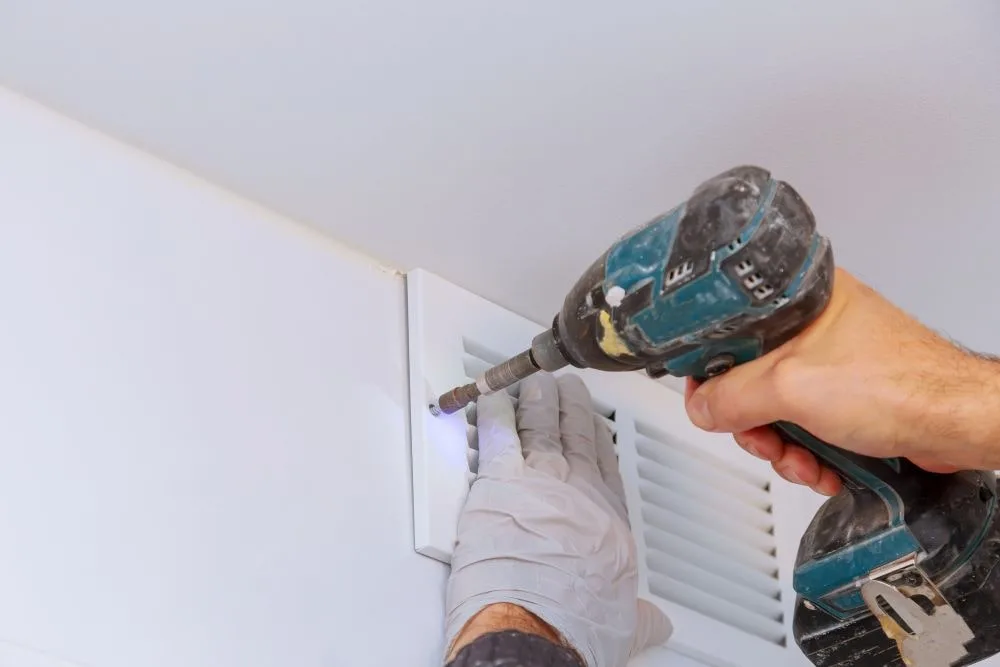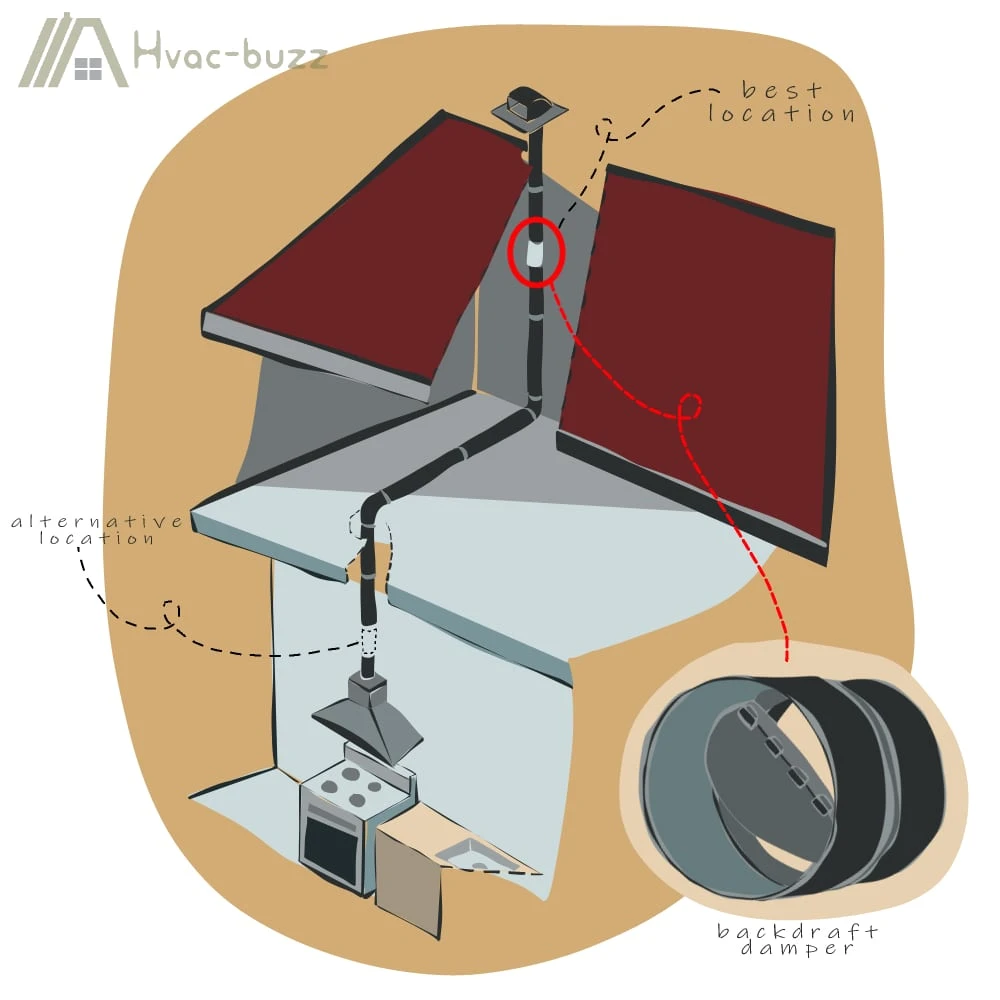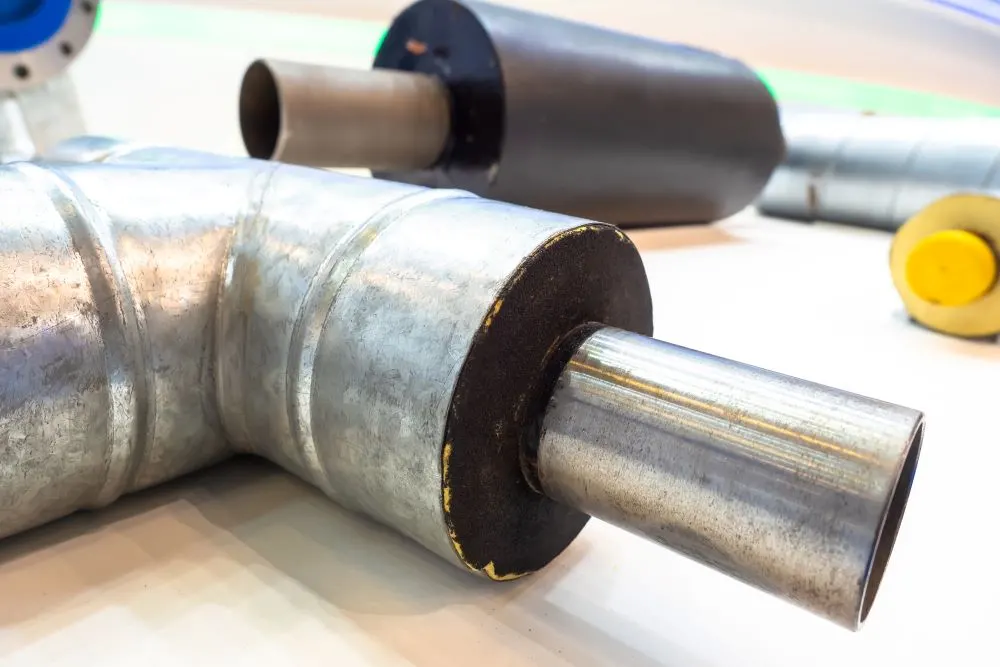Range hoods are a good idea in any functional kitchen, helping to prevent the inevitable cooking-related smoke and odors from lingering in the kitchen, permeating furniture, and spreading through the house. But sometimes, they take up too much space or are the item pushing you over your renovation budget.
I have combed through the various codes and regulations for you and present the information that you need below, minus all the confusing extras that you would find in the codes themselves.

Range hoods are not required in kitchens in Ontario as per the IRC, National Building Code of Canada (except if the range is used for commercial purposes), and Ontario Building Codes. However, the Ontario Codes do require some kind of exhaust air intake in kitchens. A range hood would satisfy this rule.
Range Hoods Not IRC Requirement
The International Residential Code (IRC) requires mechanical ventilation in the kitchen only when natural ventilation is insufficient. The code also discusses the design, construction, and installation of kitchen range hoods. This information can be found in IRC Chapter 15, Section M1503.
Furthermore, Section 1505.4.4 states the minimum required local exhaust rates in kitchens (100 CFM for intermittent and 25 CFM for continuous).
However, nowhere does the IRC specify that kitchen range hoods are required.
National Building Code of Canada: Hoods Not Required
You will find the information pertaining to residential building ventilation systems on pages 527-535 of the National Building Code of Canada.
As with the IRC, the National Building Code requires mechanical ventilation where there is insufficient natural ventilation (Section 6.3.1.3 on page 527).
According to Sections 6.3.1.7 (page 528) and A.9.10.1.4.(1) (page 1234), ventilation systems for the following have to conform to NFPA 96 Ventilation Control and Fire Protection of Commercial Cooking Operations:
- Commercial cooking equipment.
- Domestic cooking equipment that is used in a way that produces more smoke or grease-laden vapors than a normal residential family would produce.

Thus, the National Code also does not specifically require your kitchen to be equipped with a range hood.
However, if you use your range on a more industrial or commercial level, then you will need a range hood compliant with NFPA 96.
It is always vital to look at your local codes as well as the international and national codes. This is because the local authorities can make amendments and additions to these codes to make them more applicable for the nature, economy, climate, etc., of that local area.
A great example of this is California, which does require mechanical ventilation for ranges.

Exhaust System Required by Ontario Building Codes
The Ontario Building Codes do not expressly require your kitchen to be equipped with a range hood. However, (2) of Section 9.32.3.5. says:
“An exhaust air intake shall be installed in each kitchen….”
If not a range hood, this exhaust air intake point may be a vent that forms part of the whole-house ventilation system (HVAC system), an exhaust fan, etc.
(3) of Section 9.32.3.5. says that if you are not using a range hood, then the intake point has to be located either:
- In the ceiling OR
- On the wall, but still within 300 mm of the ceiling.
Thus, range hoods are not required in Ontario, but mechanical ventilation is. Range hoods will be the easiest and most effective way to achieve this requirement.
Required Ventilation Capacity
Section 9.32.1.3. of the Ontario Building Codes requires all rooms and spaces to be ventilated, but this can be provided by natural means, mechanical means, or a combination of both. The natural ventilation area would have to be 0.28 m2 per kitchen according to Section 9.32.2.1.
Whatever the chosen method of ventilation, the total ventilation capacity in the kitchen has to be 5 L/s (Section 9.32.3.3.), which is about 10.5 CFM.
HVI Specifications
According to the Home Ventilation Institute (HVI), the minimum airflow ratings for kitchen exhaust systems is 100 CFM (47 L/s) if you have intermittent exhausting (there are no specifications if you have continuous exhausting).
The actual required rating is dependent on where the range hood is located (wall or island), and the width of the hood against the wall.
Specified Range Hood Ratings
Section 9.32.3.9. of the Ontario Building Code specifies the fan (range hood) ratings, which need to adhere to:
- CAN/CSA-C260-M Rating the Performance of Residential Mechanical Ventilating Equipment.
OR
- HVI 916 Airflow Test Procedure and HVI 915 Procedure for Loudness Rating of Residential Fan Products.
The loudness rating of range hoods or kitchen exhaust fans is not specified.
Range Hood Installation and Ducting Requirements
Section 6.2.3.8. of the Ontario Building Codes looks at the requirements for exhaust ducts for mechanical ventilating systems, including range hoods.
Prevent Backdrafts
The exhaust ducts must be fitted with a backdraft damper (or similar) to prevent cold drafts and condensation. A backdraft damper will also prevent water from dripping out of the range hood.
I highly recommend AC infinity dampers they make excellent backdraft dampers that are airtight and will last the lifetime of the ventilation duct.
- An antidraft duct insert designed for use with range hoods, bathroom fans and other home HVAC applications.
- Features outer rubber gaskets that create an airtight seal and grip between the damper and ducts.
- Mounts horizontally or vertically to prevent backflow and debris from entering ducting.
- Galvanized steel body with spring-loaded aluminum damper blades that open with minimal airflow.
Last update on 2024-03-27 / Affiliate links / Images from Amazon Product Advertising API
Outdoor Discharge
The exhausted air has to be discharged outside of the house.
You can imagine the issues involved if your kitchen range hood simply took all the cooking odors, smoke, steam, and grease-containing air and dumped it into your sitting room to be absorbed by the wallpaper and furniture.

Even exhausting it into a crawl space or attic would cause similar problems to exhausting a bathroom fan into these spaces.
You can read about these issues in my articles on:
Reasons Why a Bathroom Fan Should Not Be Vented Into a Crawl Space
Reasons Why a Bathroom Fan Should Not Be Vented Into an Attic
Independent Ducting System
The ducting system for the range hood must be independent of other exhaust ducting systems (i.e., you cannot link your range hood to your bathroom fan or dryer).
However, there is an “unless” to this stipulation, and two or more exhaust systems can be connected if:
- Scenario 1
- The connection is at the range hood inlet and the inlet of the other exhaust system.
- Both or all systems have back pressure devices, which are designed to prevent backflow of air when one system is turned off and the other is running. This ensures that your cooking smoke and grease cannot enter the other system and get carried around the house and vice versa.
- Scenario 2
- Both ducts discharge into a shared vent, but the vent must be served by an exhaust fan capable of serving both systems (i.e., it must have the same or a higher CFM rating than the range hood and other exhaust system combined) timesed by the operation diversity factor.
- The shared vent or shaft’s exhaust system must be operating at all times (continuous as opposed to intermittent ventilation).
Duct Insulation
If your range hood duct runs through an unconditioned space, such as an encapsulated crawl space or uninsulated attic, then the duct itself must be insulated to prevent condensation formation.

Condensation inside ducts will cause range hoods to drip greasy water on top of the range. Not only will this be messy, but it is also a waste of energy.
Advantages of Range Hoods
Now that you know you have to have mechanical ventilation in your kitchen in Ontario, I want to put forward all the benefits of opting for the task-specific range hood.
- Your furniture, carpets, and drapes will not absorb cooking grease odors.
- You eliminate that old oil smell and other less identifiable smells from the kitchen.
- Cabinetry, walls, ceilings, and furniture are protected from moisture damage caused by excess steam created during cooking.
- You are protected against inhalation of harmful cooking by-products.
- Your kitchen is code compliant, so selling up or claiming from insurance is not compromised.
You can read more details on these 5 reasons why it’s important to have a range hood in my article on the necessity of range hoods.
Sources
https://free.bcpublications.ca/civix/document/id/public/bcbc2012/ep001029.32
https://hvi.iwrapper.com/HVI_Certification_Program_Policies/Publication_915

